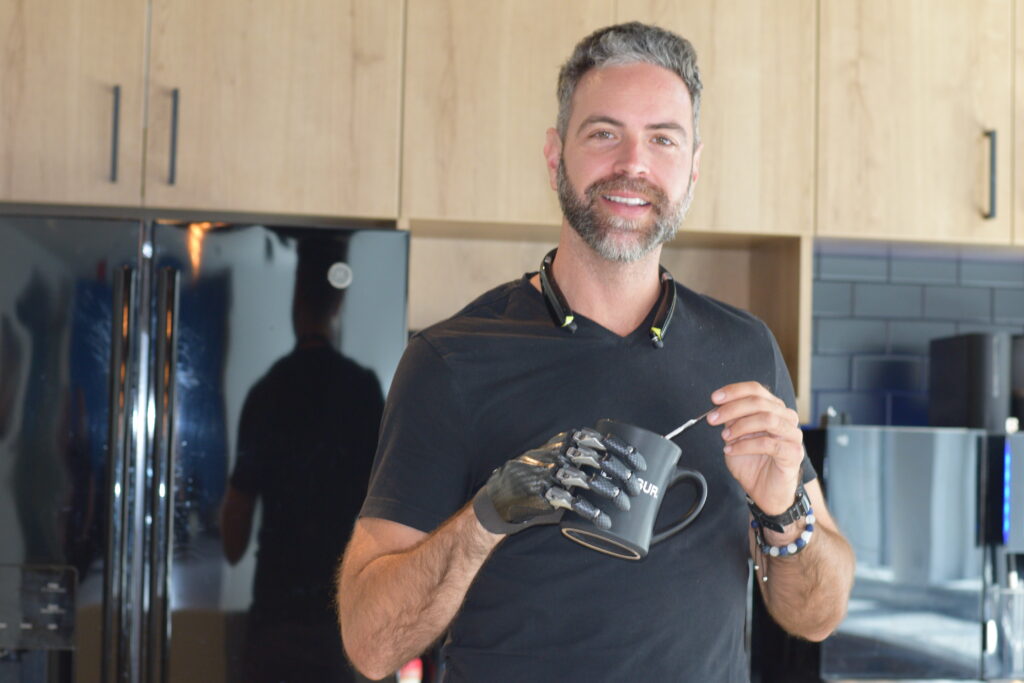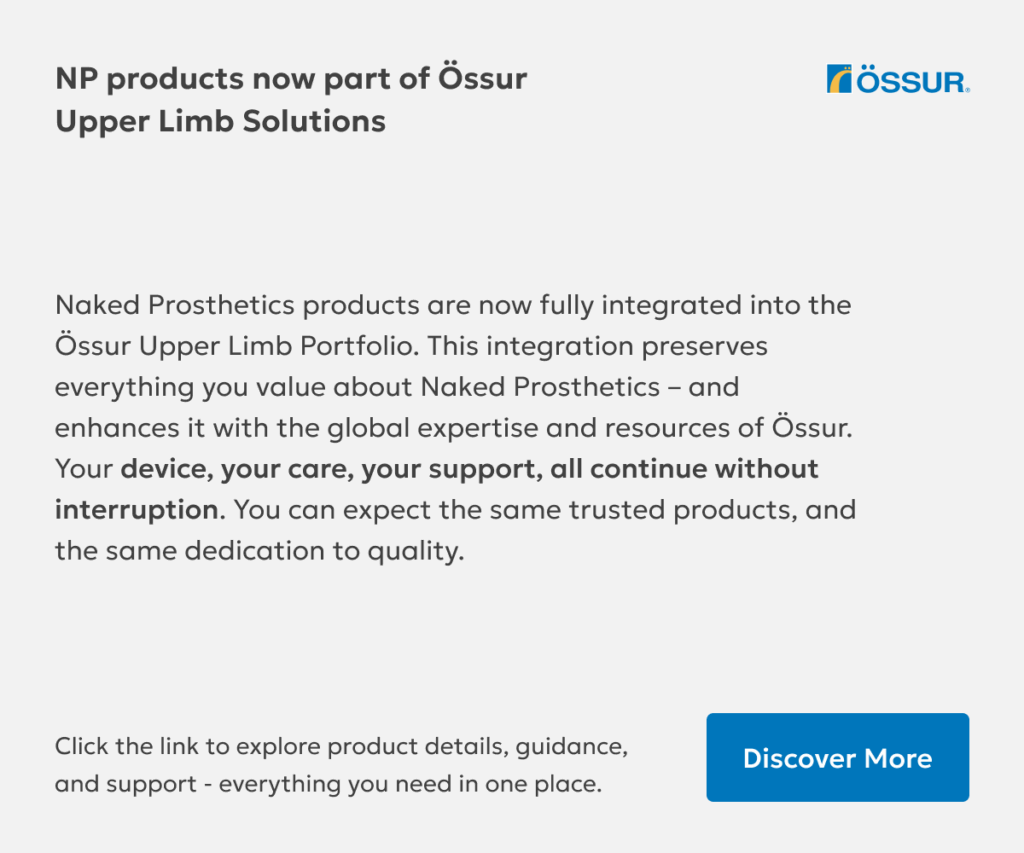Moises Aramburo has faced life’s twists and turns with resilience since his accident in 2012. This pivotal moment set the course for his extraordinary journey filled with challenges, self-discovery, and the relentless pursuit of a brighter future.
At the young age of 20, Moises and a friend wanted to help their community during a difficult time. Flooding in Mexico from a tropical storm had filled the streets so they ventured out in his 4×4 truck to see the damage and help tow trapped vehicles. Being young and wanting to let off some steam, they saw the perfect opportunity for some fun. Using a rope tied to the truck and a boogie board, they took turns surfing the flooded streets. Unfortunately, the end of the rope Moises was holding became tangled underwater on a sewer drain. This caused the rope to stretch and with the moving vehicle ahead, it ultimately severed four fingers from his right hand.
The nearest hospital was not equipped to perform the surgery needed to save his fingers and within a few hours, he was flown to San Diego where he would spend the next two months recovering.
“At 20, I didn’t expect this accident to redefine my life,” Moises began. “I spent two months in the hospital, grappling with the loss of my fingers. It was psychologically devastating.”
Despite his surgical team’s best efforts to reattach, it became apparent after a few days that the compromised blood flow would not permit functional recovery and it was decided they would remove the once severed fingers that had been reattached. It was a psychological toll that Moises had not anticipated. Moises wrestled with overwhelming feelings of guilt, bearing the heavy burden of knowing that his own choices had led him to this devastating outcome. Not only was he mourning the physical loss of his fingers but also the loss of his dreams, “I couldn’t be a firefighter or defend myself as I once could.”
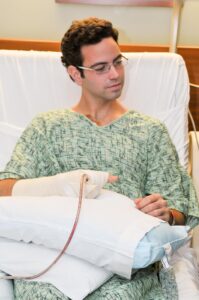
Every new encounter with someone brought a different interaction, a fresh reminder of his altered reality. The accident had shaken his sense of self, and he found himself sabotaging his progress. He recalls a nurse’s comment during hospitalization about how lucky he was to still have his thumb. “I was mad! How could you think I am lucky, not being able to feed myself or use the restroom at the time? How can I be lucky?” His mind frame was stuck in a loop of self-sabotage, he could not see how the nurse was right. “I felt that way up until a year after when I understood what she meant. I began using my thumb in ways I did not know I ever could.”
Moises could not see the positives in his situation. He recalled, “I was stuck in a cycle of negativity, focusing on what I had lost rather than what I could gain.” A family friend who had heard about his accident wanted to give him a visit. While hesitant to let anyone outside of his family visit, he agreed. On the first visit, the family friend brought a Porsche and cigar magazines, giving Moises the space to step out of his world if only for a little time. When the family friend came to visit again a few weeks later he brought a printed paper of the i-Digits website and said, “We’re going to get you this.”
“As I navigated recovery, I clung to the possibility of a better future,” Moises explained. “I saw the potential of having a prosthetic hand that would enable me to live a more fulfilling life. My family, too, began to believe in the dream of a high-tech prosthetic hand that would redefine my capabilities.” His goals were changing, shifting from wanting the cool car to the cool hand.
Once out of the hospital, Moises wasted no time. He contacted the company that manufactured the prosthetic hand and began to learn more about obtaining one. He found a Certified Prosthetist (CP) in Los Angeles and started the journey to get the device. His CP coordinated Moises joining an appointment with an active i-Digits wearer so he could hear directly how the device had worked in their life.
Six months after leaving the hospital, Moises had a chance to see the i-Digits prosthetic hand in action during a meeting with a device representative and one of his CP’s patients. He remembered thinking, “Wow, this exists, and there’s a possibility it could be mine.” Within one year of leaving the hospital, he was fit with his i-Digits device. Moises embarked on a relentless journey of learning and adaptation. He said, “I put [the device] on at 8 am and thought, ‘What can I learn today?’ Let’s brush my teeth!” It was a matter of trial and error. Over time, he began to gain mastery, and the statistics of his use provided by the engineers showed just how dedicated he was to making it work.
His advice to others facing similar challenges was simple but profound: “Fail and fail fast.” Moises knew that the road to recovery was filled with setbacks, but the key was to keep trying.
His journey continued as he explored silicone restoration through Livingskin which “allowed me to blend in when I wanted to, offering me a sense of normalcy, and the conversation away from my hand.”
Moises’ options broadened when he learned about Naked Prosthetics’ solution for amputations at or proximal to the MCP joint, the GripLock Finger (GLF). He had always desired a prosthetic device that would not depend on batteries, and this prosthesis offered a waterproof, passive positionable solution. It came into his life at the right moment, as he had recently moved to Mexico, where the climate was different from what he had experienced in San Diego. Being in a hotter climate meant his myoelectric device was often affected by the sweat inside his socket.
Adapting to the GripLock Finger was not simple, but Moises embraced the challenge. He learned to pause before action, to position his hand differently, and to be patient with himself. He cherished the device’s versatility and the fact that he no longer had to worry about battery life or environmental factors.
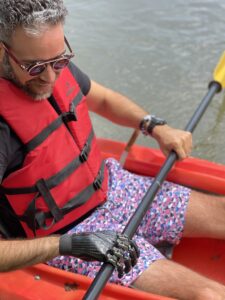
Now with three prosthetic options, the i-Digits myoelectric device, his Livingskin silicone passive functional prosthesis, and positionable GLF, Moises’ choice on which to wear is now situational and even seasonal. “I learned that having options was essential in adapting to life’s diverse challenges. Prosthetic solutions should be as unique as the individuals who use them.”
Interacting with other amputees further enriched Moises’ perspective. It opened his eyes to the varied experiences of those living with limb differences. He realized that the world was not always kind to those who were different, but he embraced the opportunity to educate and inspire others about the possibilities that existed. Today, Moises is an Ambassador for both NP and Ӧssur devices, highlighting how essential a variety of options for end-users is to restore physical and psychological well-being.
When looking back he said, “I would tell my younger self to be patient and adaptable to technology, knowing that advancements would come. That thumb had been the key to my adaptation and resilience, leading me to a brighter future filled with hope and possibilities.” Moises says, “Now, I get why the nurse said I am lucky to have my thumb! Through therapy and recovery, my thumb has made all the difference, and it has allowed me to adapt. It goes full circle.”
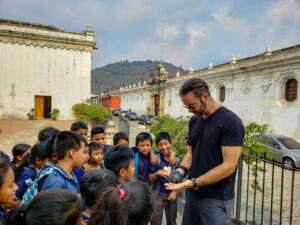
Moises Aramburo, now in his thirties, had faced his darkest moments and emerged stronger on the other side, a testament to the power of determination, innovation, and the unwavering support of family and friends.

